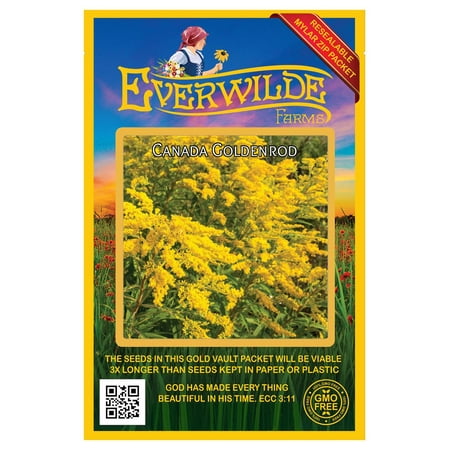How to grow goldenrod – for a native prairie plant with nectar-rich flower spikes
Goldenrods are North American natives that will add height and color to any planting schemes
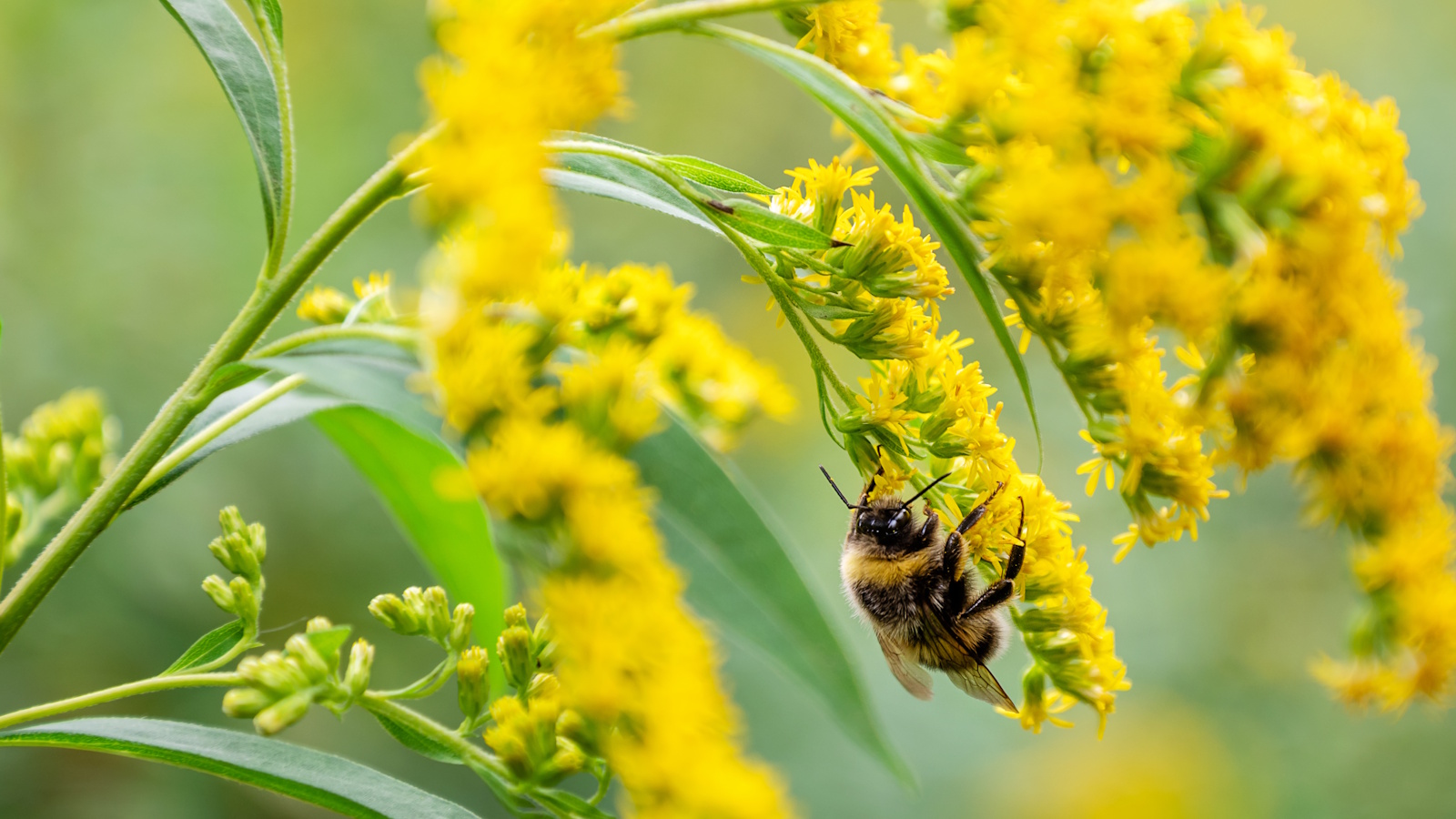

Goldenrod, scientifically known as Solidago spp., are striking perennials that bring a burst of golden color wherever they are planted. If you are looking for hardy wildflowers to entice plenty of pollinators to your plot this year, learning how to grow goldenrod is a good idea.
There are over 100 different species of Solidago, and most are native to North America. One of the most prevalent is the Canada goldenrod, Solidago canadensis, as seen in the image above. This tough species grows in a vast number of habitats and terrains, including prairies and meadows, although it can also be used to great effect in garden borders.
Here, I reveal everything you need to know about growing goldenrod, from choosing the right variety for your yard to maintaining its vibrant appearance year after year. So, whether you’re aiming to create a pollinator-friendly garden or seeking to grow some tall perennial flowers for seasonal color, our guide has all the information you need to know.
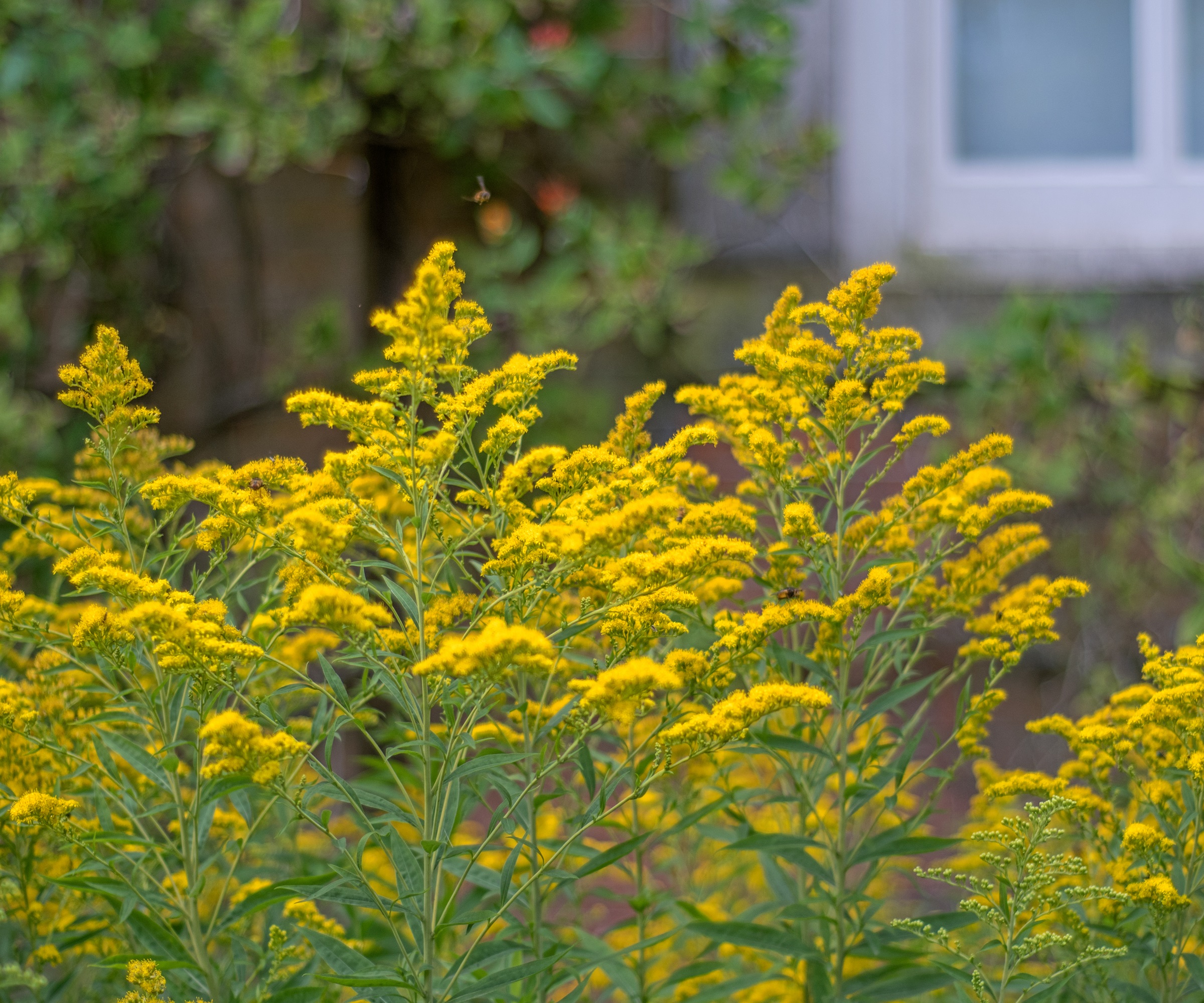
How to grow goldenrod
Goldenrod is one of the best perennials found growing in prairies across North America. With an upright habit, goldenrod stems will add vertical interest to any border, while bees and butterflies will be sure to enjoy the nectar-rich yellow flowers during the summer and fall months.
Growing habits of goldenrod plants
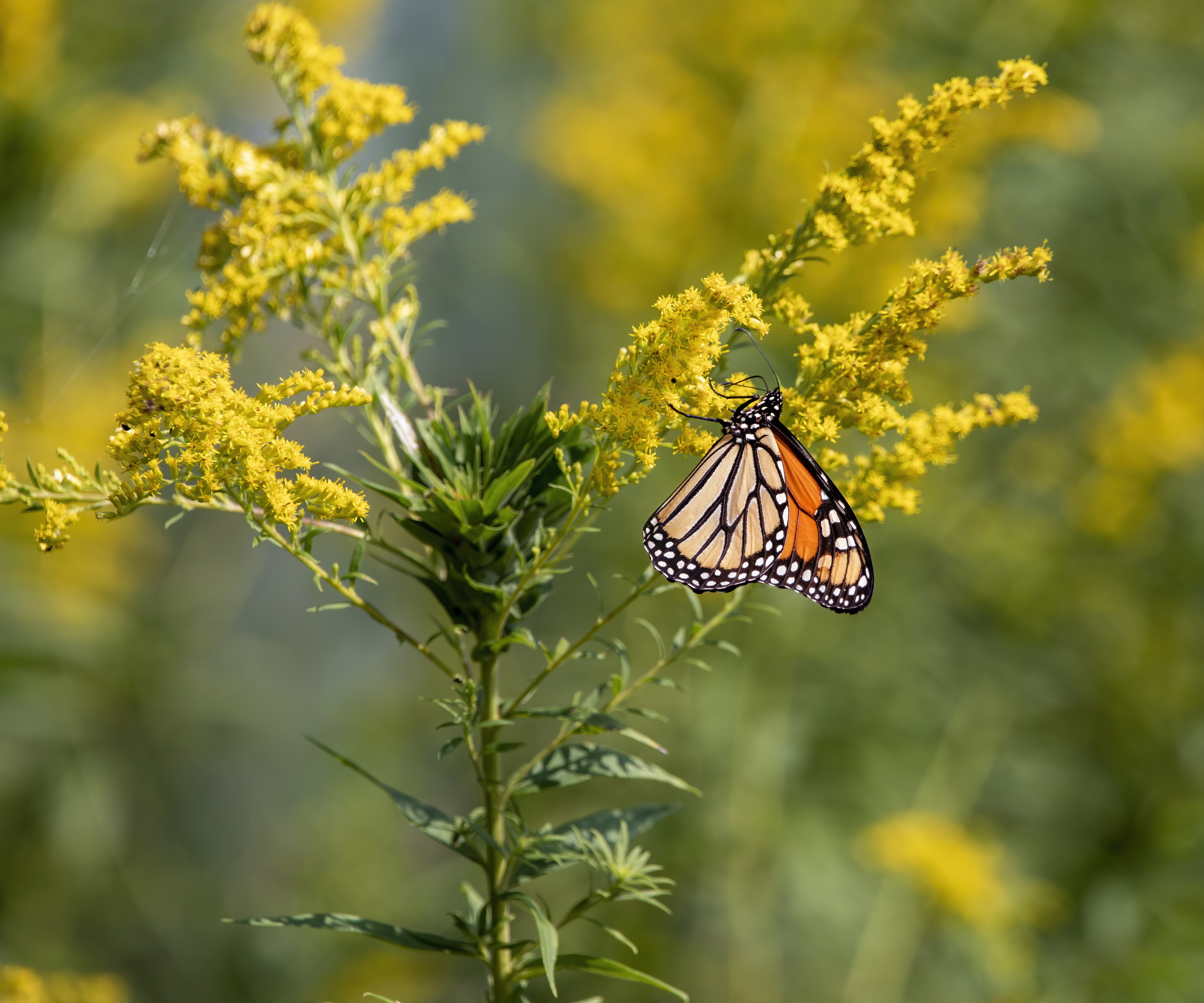
Growing best from US hardiness zones 3 to 9, this versatile and hardy plant family is suitable for a wide range of climates and terrains. Goldenrod stems typically reach heights of two to six feet, depending on the variety that you choose to grow. For example, the popular prairie goldenrod, Solidago nemoralis, will reach heights of three feet tall when grown in sunny, open borders. Solidago nemoralis seeds are available to order from Amazon.
If you are keen to increase native planting in your yard this year, why not try growing the seaside goldenrod, or Solidago sempivirens. 'The seaside goldenrod produces numerous small, bright golden-yellow flowers that are born in clusters on terminal spike-like racemes,' says Daniel Barychko, Horticultural Technician at Central Florida Zoo and Botanical Gardens.
'Sometimes the flower spikes can be several feet tall and a field or meadow full of them is quite a spectacular sight to behold,' Daniel continues. 'Like most goldenrods, seaside goldenrods are mainly fall-blooming native plants, with flowers mainly emerging in the summer and fall.
'Goldenrods have a reputation for being allergy instigators but this is not the case,' Daniel says. 'The real culprit is ragweed pollen which is broadcast by the wind and can bloom around the same time. Goldenrod pollen is dispersed by insects such as bees and is too heavy to be blown far from the plant.
'Interestingly, goldenrod has been used medicinally since at least Roman times and was used by the Seminole Tribe of Florida to treat wounds,' Daniel adds. 'The native range is much of the Florida peninsula and the coastal panhandle, making this an ideal option for coastal environments, or yards with sandy and poor soils. Most goldenrods are drought tolerant once established, but some watering will help them to establish.'
Live Solidago plants are available to order from Amazon.

Daniel is a Horticultural Technician at Central Florida Zoo and Botanical Gardens in Sanford, Florida. He studied ecology, botany, and zoology and earned a Bachelor of Science in Biology at Florida Atlantic University, Boca Raton, in 2001.
Care guide for goldenrod
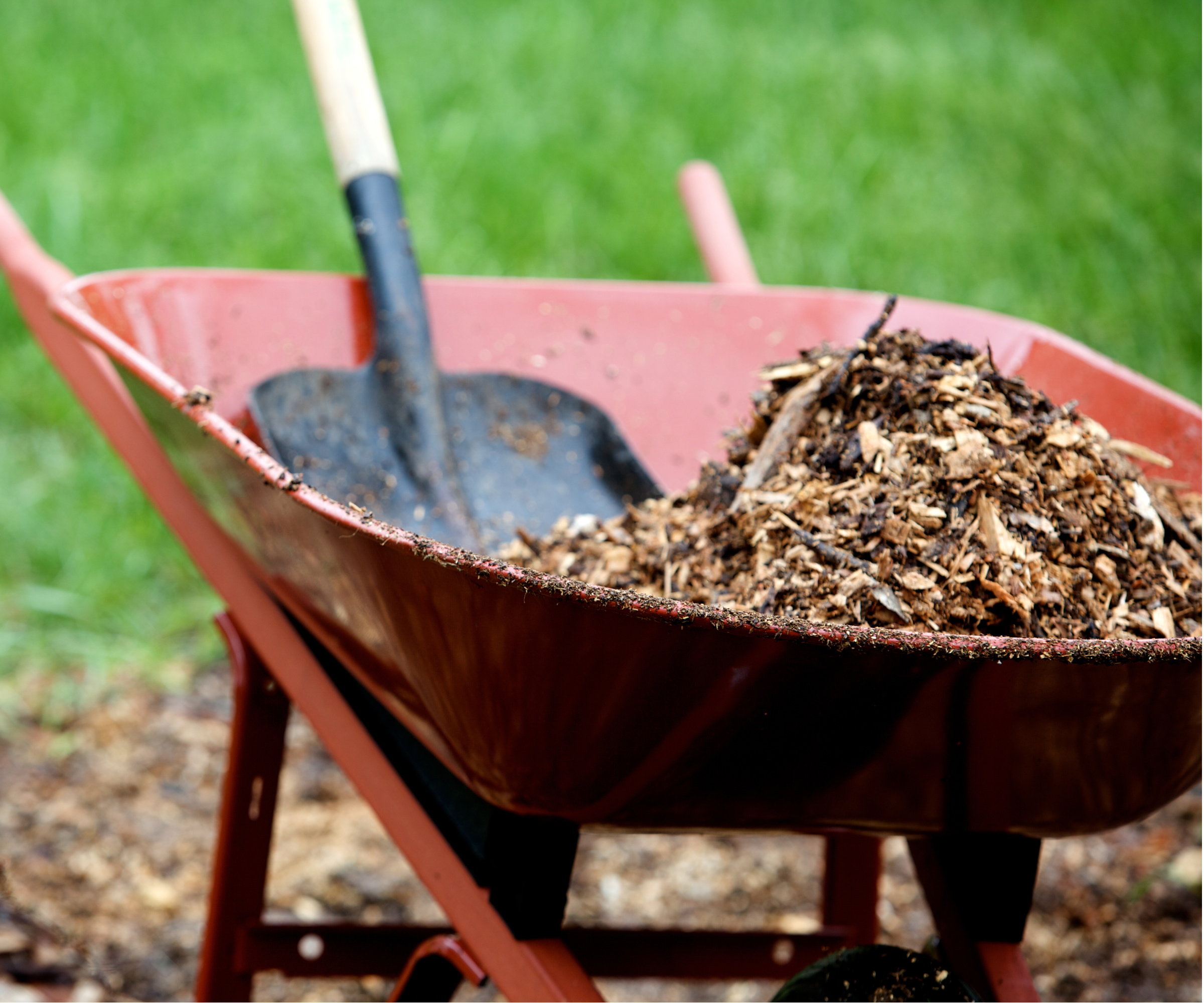
Soil: Most goldenrod species are versatile and can be grown in a range of soils, including sandy. While they are not picky, they tend to do best in free-draining soil that has a neutral soil pH, so will thrive in yards that produce a reading of 6.5 to 7.5. If you have damp soil, consider growing the rough goldenrod species, otherwise known as Solidago rugosa, which does better than most other varieties in moist conditions.
Light: While they will tolerate some shade, all goldenrod plants prefer to be grown in full sun where they will enjoy six or more hours of bright light each day. If grown in part-shade, the number of blooms can be limited.
Watering: It is a good idea to carry out some deep watering during the spring and summer to help young goldenrod plants to establish. Once mature, goldenrod will prove to be drought tolerant and rarely need supplemental watering except during extremely dry weather in the summer.
Fertilizing: Goldenrod requires little to no fertilization. These plants thrive in poor-quality soils, so you should not need to use any feed when growing goldenrod. If you are worried about soil nutrition, consider annually mulching your borders to improve soil health, using something like this pine bark mulch, available from Walmart.
Pruning: For compact, bushy plants, it is best to prune goldenrods in late spring, typically reducing around a third of the fresh growth in May. Snip down to a healthy pair of leaves, which will encourage the plant to produce plenty of new shoots and flowers later in the year. Flowering should continue late into the fall, but it is a good idea to deadhead goldenrod blooms as they pass, otherwise, you may find you have seedlings germinating all over your yard. Cut down any faded foliage in late winter, ready for the plant to shoot in spring.
Toxicity: While it can vary from species to species, most goldenrods, Solidago spp., are not considered toxic to humans or pets, although they may cause minor skin irritation when pruning. While not in the same plant genus, the rayless goldenrod, Haplopappus heterophyllus, is considered toxic to horses.
FAQs
What should I grow alongside goldenrod?
For a wild or natural aesthetic, consider growing goldenrods alongside black-eyed Susans or coneflowers, which will produce a colorful perennial display. Alternatively, plant them with native grasses, such as the blue California fescue, or Festuca californica. This mid-sized resilient native plant can grow to two feet tall, with arching gray-blue foliage that is ideal for use as an accent plant, perfectly complementing the yellow goldenrod blooms. Fescue live plants are available from Amazon.
Growing resilient native plants, like goldenrods, is always a good idea. These plants have evolved to thrive in the local climate and soil, so will require less maintenance and attention.
For another native plant, why not learn how to grow firebush? Native to North, Central and South America, firebush plants, Hamelia patens, are sure to light up your borders with their unusual red blooms.
Design expertise in your inbox – from inspiring decorating ideas and beautiful celebrity homes to practical gardening advice and shopping round-ups.

Thomas is a Content Editor within the Gardens Team at Homes and Gardens. He has worked as a professional gardener for both public spaces and private estates, specializing in productive gardening, growing food and flowers. Trained in Horticulture at the Garden Museum, he has written on gardening and garden history for various publications, including The English Garden, Gardens Illustrated, Hortus, The London Gardener and Bloom. He has co-authored a Lonely Planet travel book, The Tree Atlas, due out in 2024.
